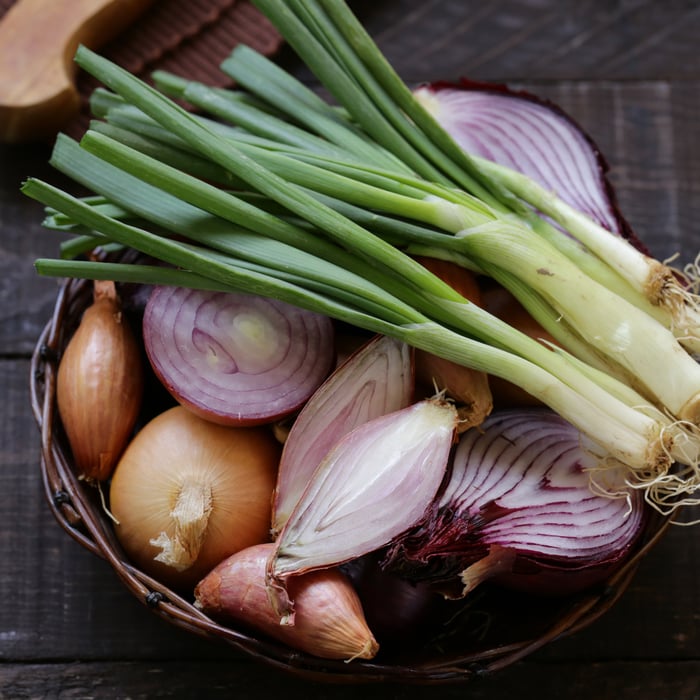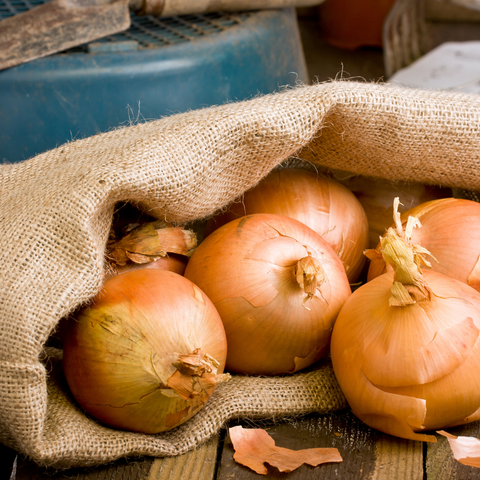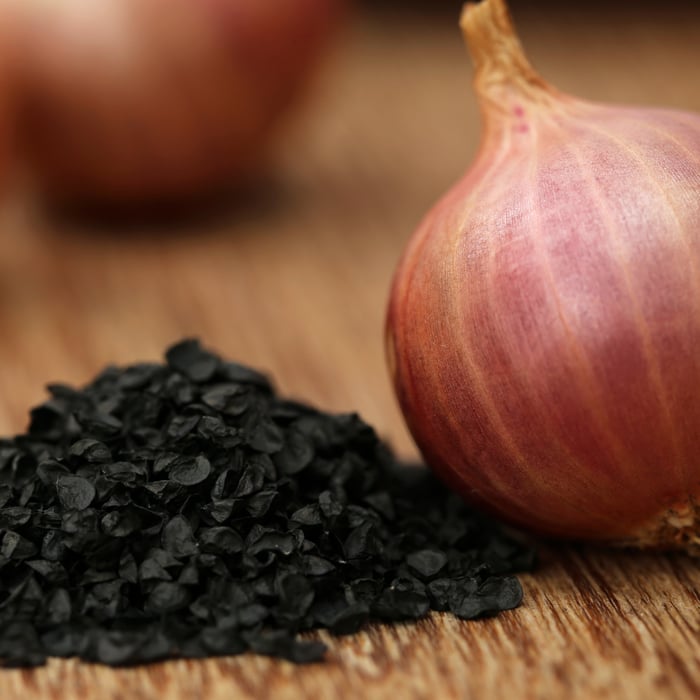Onions are a versatile and essential ingredient in many dishes, and growing them at home can be a rewarding experience. If you have limited space, growing onions in pots can be a practical solution. Here's a comprehensive guide on how to grow onions in pots:
Choosing Onion Varieties
Before you start, choose an onion variety that suits your needs. Onion plants fall into two main categories: long-day onions and short-day onions. Long-day onions require 14 to 16 hours of daylight to grow, while short-day onions require 12 hours of daylight.
If you live in the northern hemisphere, plant long-day onions in early spring and harvest them in late summer or early fall. Conversely, plant short-day onions in the fall and harvest them in late spring or early summer. Some popular onion varieties to consider include:
- Red onions
- Yellow onions
- White onions
- Shallots
Onion Seed Assortment | 8 Variety Pack
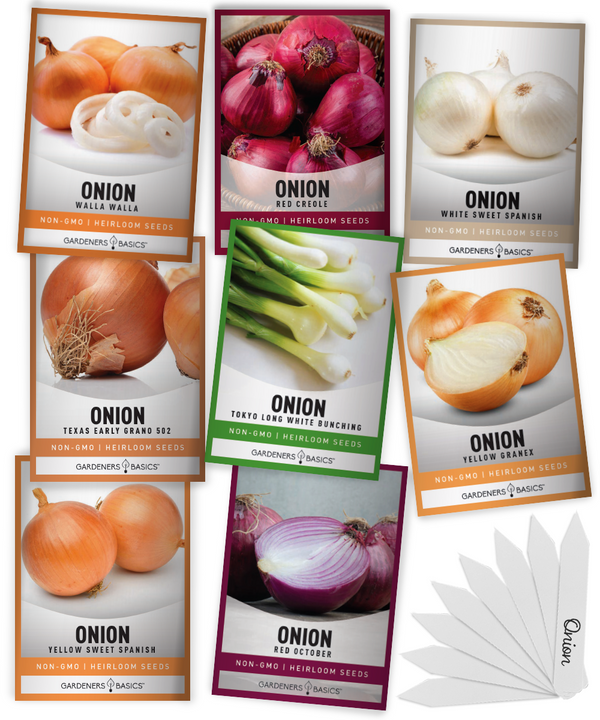
$15.95
Complete Onion Seeds Collection: 8 Non-Hybrid, Heirloom, Non-GMO Seed Varieties Introducing our 8 Onion Seeds Variety Pack – the perfect collection for home gardeners, chefs, and onion enthusiasts looking to grow a diverse range of flavorful onions! Each variety in… read more
Starting Onions from Seed or Bulbs
You can start onions from seeds or bulbs, depending on your preference. Onion seeds are a cheaper option, but they take longer to germinate and grow. Onion bulbs, also known as onion sets, are easy to plant and grow faster than seeds.
If you decide to plant onion seeds, start them indoors 8 to 10 weeks before your last frost date. Plant the seeds in a seed tray and keep them under grow lights for 14 to 16 hours a day. Once the seedlings are about 2 inches tall, transplant them into pots.
If you opt for onion bulbs, plant them directly in the pot. Make sure the pot is at least 6 inches deep to accommodate the bulbs' roots.
Choosing the Right Pot and Soil
Choose a pot that is at least 6 inches deep and has drainage holes in the bottom. Onions don't like to sit in water, so the pot should have good drainage.
Use high-quality potting soil that is well-draining and rich in organic matter. You can mix in some compost or well-rotted manure to improve the soil's fertility. Avoid using heavy garden soil or soil that has a lot of clay.
Planting Onions in Pots
Plant onion bulbs or seedlings in the pot with the pointy end facing up. Plant the bulbs or seedlings about 1 inch deep and 4 to 6 inches apart. If you're planting more than one bulb or seedling, space them at least 4 inches apart.
Water the onions thoroughly after planting, making sure the soil is evenly moist. Onions need about 1 inch of water per week, so water them regularly to keep the soil moist but not waterlogged.
Providing the Right Growing Conditions
Onions need full sun to grow, so place the pot in a sunny spot. If you don't have access to full sun, use a grow light to supplement the natural light. Long-day onions require 14 to 16 hours of light a day, while short-day onions need 12 hours of light.
Onions also need regular fertilization to grow properly. You can use a balanced fertilizer, such as a 10-10-10 fertilizer, every 3 to 4 weeks. Alternatively, you can use a slow-release fertilizer that lasts for several months.
Tokyo Long White Bunching Onion Seeds
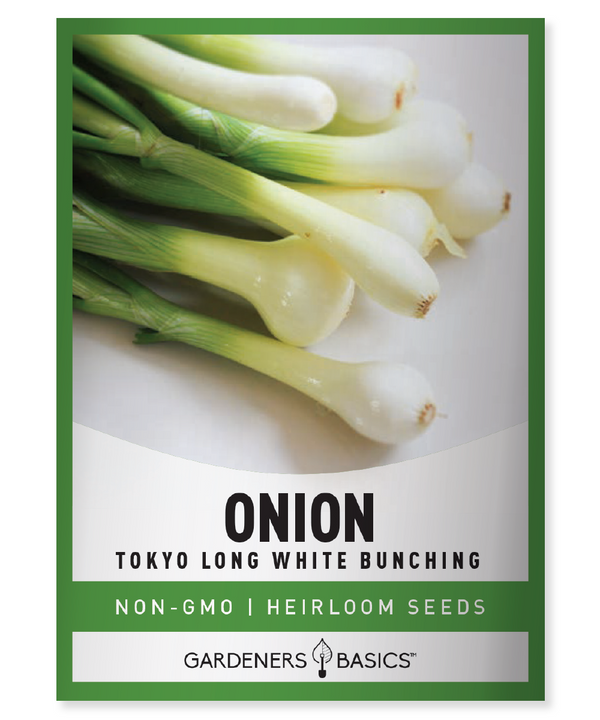
$2.49
Tokyo Long White Bunching Onion Seeds – Heirloom, Non-GMO, Green Onion Variety Discover the exceptional Tokyo Long White Bunching Onion seeds, also known as green onion seeds, perfect for adding fresh flavor to your garden and kitchen. These heirloom, non-GMO, non-hybrid,… read more
Harvesting Onions
Harvest onions when the tops start to turn yellow and fall over. Stop watering the onions for a week before harvesting to allow the soil to dry out. Once the onions are ready, pull them out of the pot and lay them out in the sun to dry for a few days.
If you prefer green onions, you can harvest them earlier. Cut the green tops off the onions when they are about 6 inches tall, leaving about an inch of the white bulb attached to the roots. Green onions can be harvested as needed and will continue to grow back.
Troubleshooting Common Onion Problems
Growing onions in pots is relatively easy, but they can be prone to some problems. Here are some common onion problems and how to solve them:
Yellowing Leaves
Yellowing leaves can indicate overwatering, under-watering, or nutrient deficiencies. Check the soil's moisture level and adjust your watering schedule accordingly. If the soil is consistently moist, reduce watering frequency. If the soil is too dry, increase the watering frequency. Fertilize with a balanced fertilizer to provide essential nutrients.
Pests
Onions can be attacked by pests such as onion maggots, thrips, and aphids. Use insecticidal soap or neem oil to control the pests.
Disease
Onions can be susceptible to fungal diseases such as white rot, downy mildew, and fusarium wilt. To prevent disease, avoid overwatering and ensure the soil has good drainage. Avoid planting onions in the same soil year after year.
Conclusion
Growing onions in pots is an excellent option for those with limited garden space. By choosing the right onion variety, pot, soil, and growing conditions, you can enjoy a bountiful harvest of onions. With a little care and attention, you can grow delicious and healthy onions right on your balcony or patio. Now that you know how to grow onions in pots are you going to give it a try?
Onion Seed Assortment | 8 Variety Pack

$15.95
Complete Onion Seeds Collection: 8 Non-Hybrid, Heirloom, Non-GMO Seed Varieties Introducing our 8 Onion Seeds Variety Pack – the perfect collection for home gardeners, chefs, and onion enthusiasts looking to grow a diverse range of flavorful onions! Each variety in… read more
FURTHER READING ---->>> How to Grow Onions From Seed



